The default Raw Data templates for QC-CALC only show rows for the Feature Labels, Nominal values, Tolerances, and actual data values. This White Paper will give step-by-step instructions for designing your own custom template and adding a row of Dimension Sources to one of the Raw Data standard templates.
The Report Designer
The directions below will add a row containing Dimension Sources to the report. This is a lengthy process, but relatively simple to accomplish.
- From QC-CALC Real-Time choose the Report – Design Template menu.
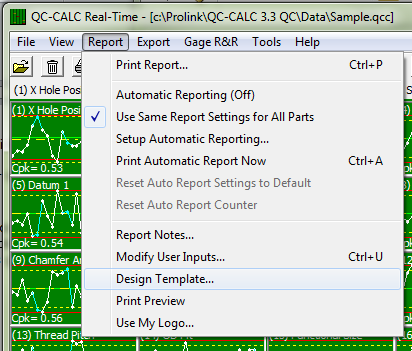
- Choose the DataLand.raw template from the list of files that appears and click Open. The Report Designer now appears on the screen.
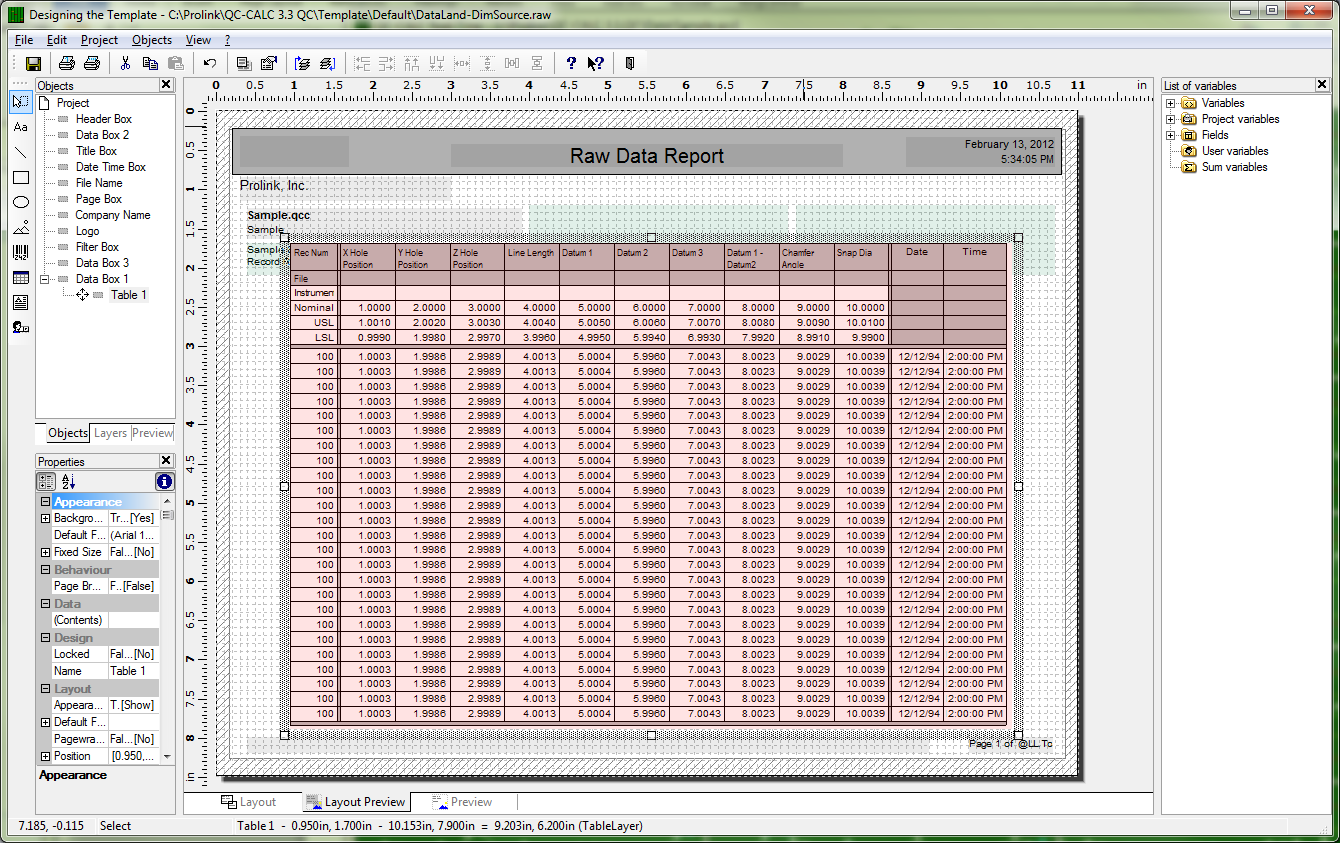
Header Lines
- Double-click on the table and the Table Contents window will appear.
- Choose the Header Line tab, then click the down arrow next to the “Line Definition Labels” area. Select the first item with “(empty)” showing, and the Choose a Table Line Definition window will appear.
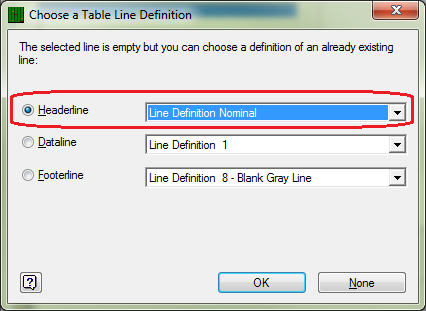
- In the Headerline list choose the “Line Definition Nominal” option. This gives a good basis for the Dimension Source line that will be added.
- You now have a new Header Line showing in the list, but the name needs to be fixed. Choose the button to the right of the “Line Definition Nominal (1)” list to edit and reorder the Header Lines.
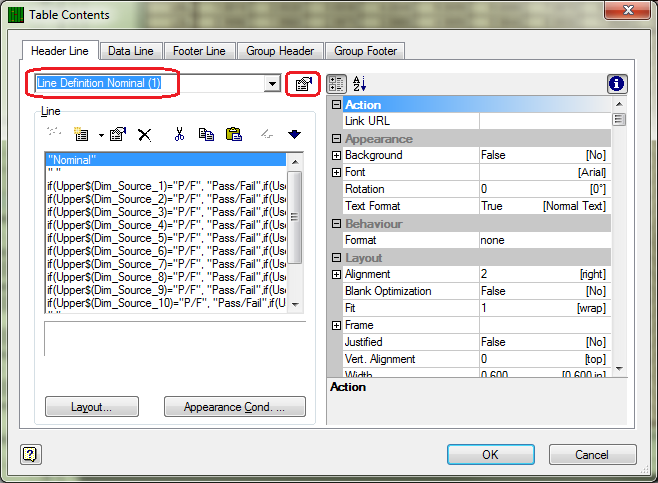
- In the Line Definitions window find the “Line Definition Nominal (1)” line and highlight it. Change the Description to be “Line Definition Dim Source”, then use the up arrow in the upper right corner to move that line until it is just above the “Line Definition Nominal” line. This will make the Dimension Source line appear above the Nominal line in the report too.
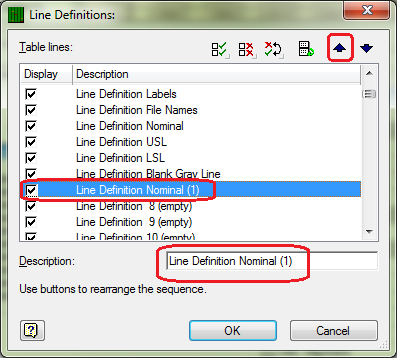
- Back in the Table Contents window choose the new “Line Definition Dim Source” item we just created.
- The very top line of the Line area is the left-most column in the report. At the moment, this is going to print “Nominal.” Double-click that line, and the Edit Table screen appears.
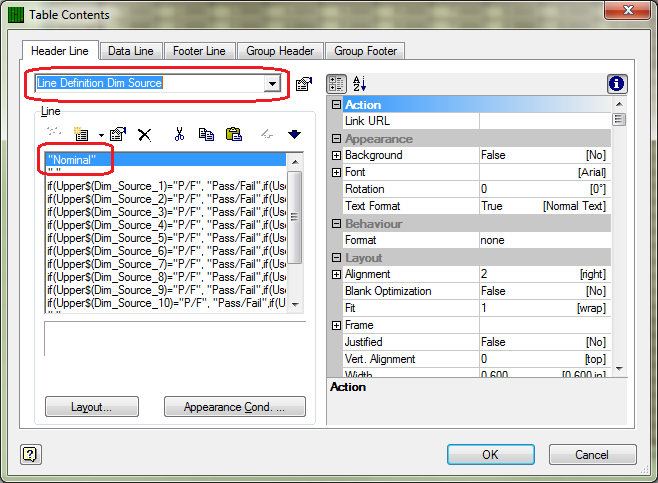
- In the Edit Table screen change “Nominal” to “Dim Source” to make the label column correctly identify the values in that row.
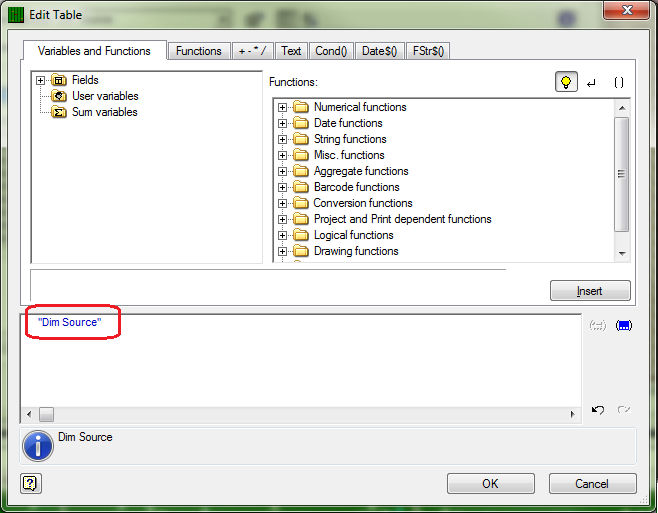
- Back in the Table Contents screen, double-click the third line in the Line area (it starts with “if(Upper$(Dim_Source_1)=…”).
- In the Edit Table screen, replace the whole line showing at the bottom of the screen with “Dim_Source_1”. This should turn red after typing to show it is a recognized variable in the Report Designer and if the first dimension in the qcc file you currently have open already has a Dimension Source assigned, you will see that value at the bottom of the window. Copy the value you typed into your Clipboard (CTRL + C) and click OK.

- Back in the Table Contents window double-click the line right below the Dim_Source_1 line, paste in the contents of the clipboard (CTRL + V), and change the 1 at the end to a 2.
- Continue this process for all 10 dimensions, ensuring all numbers 1 – 10 are used.

- Click the OK button on the Table Contents window and save your changes to the template.
- You will be asked if you changed the number of dimensions in the report. Answer No.
- When you run your report, you will now have an additional row in the lines at the top that shows the Dimension Source value for each dimension.